Mastering Braiding Techniques for 24-Inch Hair Styles
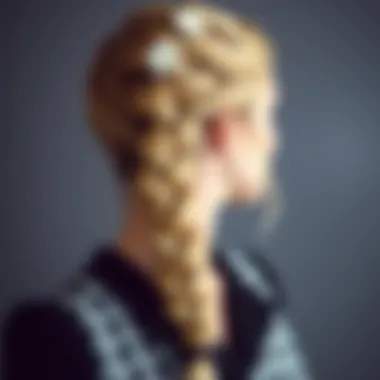
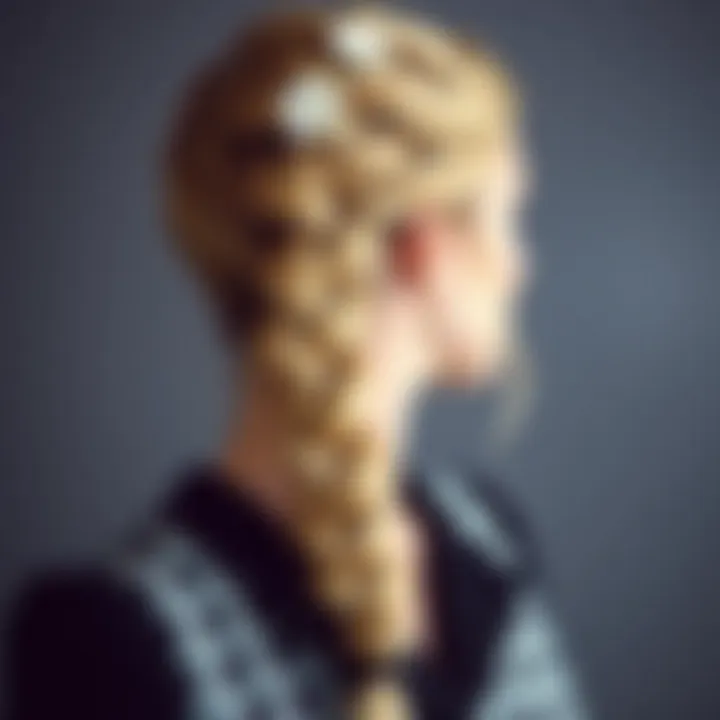
Intro
Braiding hair is not just a matter of style; it’s an art form that has been passed down through generations. Those with 24-inch locks know this all too well; long hair offers a canvas of unlimited possibilities. Mastering various braiding techniques not only enhances one’s aesthetic but also showcases individuality and flair. This article is all about honing your skills in braiding long hair, focusing on what makes 24-inch styles unique and how to nail them.
Most people might think of braids as simple, everyday hairstyles. Yet, when done right, they can elevate an ordinary look to extraordinary heights. Understanding the basics of hair anatomy, choosing the right products, and recognizing various braiding styles can make all the difference.
As we journey through this piece, we’ll break down the necessary tools, share styling techniques, and offer maintenance tips that will keep your braids looking picture-perfect for longer. If you’re seeking to elevate your hairstyling game, here’s where you’ll find the insights to do just that.
Latest Fashion Trends
In the ever-evolving world of fashion, hair trends are no exception. Braided hairstyles have gained notoriety on social media platforms like Instagram and TikTok, becoming a statement in stylistic expression. Let’s take a closer look at what’s trending in the world of braiding.
Seasonal Style Highlights
The trends in hair braiding seem to go in cycles, influenced by the time of year and what’s hot in the fashion world. To keep your 24-inch styles fresh, here are some trends that have recently gained traction:
- Chunky Braids: This style features thick, textured braids that add volume and make a bold statement.
- Messy Styles: Loose, tousled braids have taken the spotlight. They give an effortless vibe, perfect for casual days.
- Colorful Extensions: Adding pops of color through extensions or dyed sections plays wonderfully with longer braids, boosting creativity.
Influential Runway Looks
Braiding has made quite the impression on runways. Major fashion designers have adopted braided styles in their looks, offering innovative ideas that can inspire your 24-inch hairstyles. Some standout moments include:
- Chanel’s Classic Twist: Long braids adorned with pearls are a testament to the elegance of braiding, as showcased in recent shows.
- Alexander McQueen’s Artistic Flair: The use of intricate braiding patterns paired with avant-garde outfits signals that hair can be a powerful part of high fashion.
- Valentino’s Vintage Vibes: Braids with a retro twist, complementing bohemian dresses, epitomize the idea that long hair can tell a story.
"Fashion is a reflection of your personality—your hairstyle is a canvas and braids can be a bold statement if done right."
In summary, braids are not merely a trend; they’re a versatile style that can be tailored to suit any occasion or personal style. Mastering the art of braiding, especially with long hair, allows for vast creativity that aligns perfectly with current fashion sensibilities.
Understanding 24-Inch Hair
When it comes to hair manipulation and styles, length often plays a crucial role. In the context of this article, 24-inch hair serves as a canvas for an array of braiding techniques, each offering a unique flair and expression. This length touches the middle of the back for most individuals, allowing enough material for intricate patterns while maintaining a manageable weight.
Length and Its Implications
A notable aspect of working with 24-inch hair is its potential to transform your look entirely. Longer hair tends to evoke a sense of elegance. It can be a fantastic backdrop for complex braids, and greater length means more versatility. On one hand, it gives room for creativity, accommodating styles such as cascading box braids or stunning fishtail braids. On the other, it brings forth its own set of challenges.
- Weight Distribution: With longer hair, the weight can lead to strain on the scalp if styles are too tight. It’s crucial to adopt gentle methods to avoid damaging hair follicles over time.
- Maintenance: Longer locks require diligent care. This includes cleansing, conditioning, and potentially regular trims to ensure split ends don’t detract from your styles.
- Time Investment: Creating intricate braids on 24 inches can take longer. Dedication is needed not just for styling, but also for the careful sectioning that’s vital to achieve each braid’s intended look.
Hair Type Considerations
Understanding the texture and type of your hair is paramount when braiding 24-inch strands. Different hair types respond uniquely to various braiding techniques, influencing both the final appearance and the longevity of the style.
- Straight Hair: Generally easier to section and manipulate, straight hair tends to maintain styles longer due to its sleek surface. However, it may not hold volume very well in certain braiding patterns.
- Wavy Hair: Those with wavy hair often enjoy added volume, which can enhance the look of braids. The challenge is that waves can make sections less uniform, requiring a steadier hand.
- Curly Hair: Curly textures can yield beautifully luscious braids but can also pose difficulties in sectioning evenly. Patience and moisture are keys; therefore, utilizing quality styling creams can help tame coils when braiding.
- Coily Hair: This type is naturally voluminous and can create exceptionally eye-catching braids. However, coily hair’s texture may require extra attention, as it can be more prone to dryness. Keeping it hydrated and conditioned ensures that each braid looks its best.
The Basics of Braiding
Braiding is more than just a method of styling hair; it’s an intricate art form that combines technique with personal expression. Understanding the basics of braiding is crucial for anyone looking to master 24-inch styles. Not only does it serve as the foundation for more complex styles, but knowing how to braid also allows for a greater variety of looks, from casual everyday styles to intricate updos. This section delves into historical context and various braiding techniques, giving a well-rounded understanding of what braiding hair entails.
Historical Context of Braiding
Braiding hair has been around for thousands of years, serving various purposes across cultures. From ancient Egypt, where braids symbolized status, to African cultures where intricate styles convey identity and community ties, the practice of braiding is steeped in tradition. Even in modern times, braiding maintains cultural significance.
Braiding techniques can often be seen as a form of art, where each braid tells a story—be it about fashion, culture, or personal identity. For instance, the cornrow styles prevalent in many African communities are not merely aesthetic choices; they represent heritage and history.
“Hair is a part of who we are. It expresses our identity; it whispers our stories.”
This historical context enriches our connection to braiding. As you learn the basics, remember that each braid carries the weight of its cultural significance and the artistry of its execution.
Different Braiding Techniques
When it comes to braiding, mastering different techniques allows you to express yourself creatively. Each style has its own unique charm and purpose, catering to various occasions and personal tastes. Let’s look more closely at three prominent braiding techniques: the three-strand braid, the French braid, and the box braid.
Three-Strand Braid
The three-strand braid is perhaps the simplest and most commonly recognized technique. This braid consists of three strands of hair intertwined in an over-under pattern. It’s straight to the point—ideal for beginners and serves as a building block for more intricate styles.
One of its standout features is versatility: you can cinch it tight for a polished look or loosen it for a casual vibe. Another advantage is its speed; a three-strand braid can be done in a jiffy, making it a practical choice for those short on time.
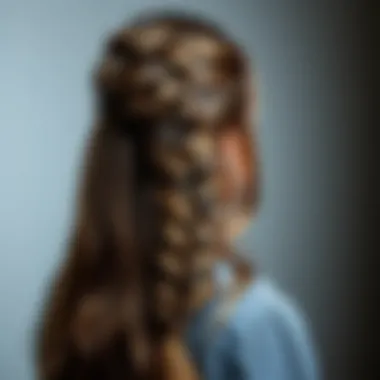
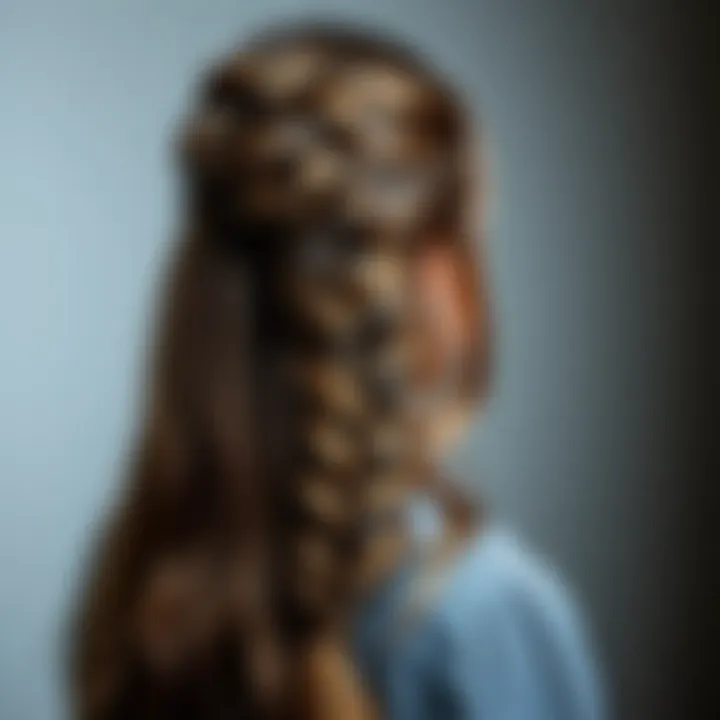
However, it has its disadvantages. Because of its simplicity, it might not provide the longevity or intricacy found in other braiding techniques; it can appear basic when compared to more elaborate styles.
French Braid
The French braid takes things up a notch. This style involves adding hair to the strands as you braid, allowing for a more complex and elegant look. The French braid hugs the head, giving it a sleek appearance that’s often favored for formal occasions.
A key characteristic of this braid is its ability to keep hair securely in place, which is particularly beneficial for long lengths like 24 inches. This makes it a popular choice for those wanting a sophisticated look that lasts throughout the day.
However, the complexity of creating a French braid can pose a challenge for beginners. It requires practice to master the technique of seamlessly integrating additional sections of hair without losing grip or tension.
Box Braid
Box braids represent a bold choice and are particularly popular in African and African-American communities. They consist of individual plaits, often using added hair for thickness and length, which results in a chunky, three-dimensional effect.
The unique feature of box braids is their protective nature. They shield the natural hair from damage while also allowing for various styling options—from updos to loose hairstyles. Additionally, they can last for weeks when cared for properly, making them both convenient and stylish.
That said, creating box braids is a time-consuming process, requiring significant patience, particularly with longer lengths. Furthermore, if not installed correctly, they may lead to tension on the scalp, which can be uncomfortable.
Understanding these basic techniques provides a strong foundation for your braiding journey. Each style suits different occasions and personal preferences, making braiding an endless source of creativity and expression.
Essential Tools Required for Braiding
When it comes to braiding hair, having the right tools in your arsenal can make all the difference. Good tools not only enhance the braiding process but also contribute to the overall quality and longevity of the styles created. Using proper equipment lays the foundation for beautiful, long-lasting braids, especially when dealing with 24-inch lengths.
Combing and Sectioning Tools
Combing and sectioning tools are crucial in preparing the hair before diving into any braiding technique. A well-groomed mane allows for smoother braids and an overall polished look. Let’s explore some essential combing tools:
- Wide-Tooth Comb: This is your go-to for detangling. It gently works through knots without causing breakage. It’s especially important for longer hair, where tangles can become problematic.
- Rat Tail Comb: Ideal for sectioning, this tool has a fine tip that allows for creating precise parts in the hair. A defined part is essential for certain braids, ensuring the style looks neat.
- Clips: Sectioning clips keep unbraided hair out of the way, making it easier to focus on one section at a time. This reduces the chance of loose strands ruining your braid.
Hair Accessories and Products
Equipping yourself with the right products and accessories further elevates your braiding experience. Let’s break down a few essentials:
Hair Ties
Hair ties are not just any old elastic; they are pivotal to securing braids effectively. The most notable attribute of hair ties is their variety—including fabric, spiral, and silicone types. This versatility allows you to choose the best match for your hair type and braiding style.
- Benefits: Not only do they keep braids in place, but they also avoid causing unnecessary tension, which can lead to breakage.
- Unique Features: Fabric hair ties, for instance, are soft and do not snag, making them a popular choice among braiders for maintaining hair health.
Bobby Pins
Bobby pins are a must-have for any braiding enthusiast. They help secure braids, especially when creating updos or intricate designs. Their low profile makes them nearly invisible, allowing the braid to shine without distraction.
- Benefits: They can hold hairstyles in place without causing strain on the scalp.
- Unique Feature: The grip of a quality bobby pin can make or break your style—look for pins that fit snugly without sliding out.
Styling Creams
Styling creams play a significant role when it comes to preparing hair for braiding. A good cream can tame frizz and add texture, making strands easier to handle while braiding.
- Benefits: They help keep the hair smooth, ensuring an even look throughout the braid, which is key for styles that showcase the length significantly.
- Unique Feature: Many styling creams also offer hold, which can keep styles intact for longer periods, even with the length of 24 inches that may tend to loosen over time.
"Using the right tools and products is crucial; it sets the stage for a successful braiding experience."
Effective use of these tools can enhance the braiding experience, leading to styles that are not only aesthetically pleasing but also easy to maintain. As with any artistry, the right instruments are indispensable in achieving desired results.
Step-by-Step Braiding Techniques for Inches
Braiding hair, especially long locks of 24 inches, can be an art and a science all wrapped up in one. Understanding the methodical process behind creating stunning braids empowers individuals to express style, maintain hair health, and explore their creativity. The steps outlined below are not just instructions; they serve as essential building blocks for creating intricate and impactful styles, ensuring long hair can be both manageable and fashionable.
Preparing the Hair
Before diving into any braiding technique, it’s critical to prepare the hair properly. This initial step plays a crucial role in achieving braids that are not only beautiful but also enduring.
- Wash and Condition: Clean hair is paramount. Ensure to use a gentle shampoo and a moisturizing conditioner. This routine keeps hair healthy and reduces tangling.
- Detangling: Brush through the hair using a wide-tooth comb, starting from the ends and gradually working up to the roots. Using a detangler spray can simplify this process.
- Sectioning: Divide the hair into manageable sections. Using hair clips will help keep hair organized and prevent tangles as you work. For those new to braiding, starting with smaller sections is often easier.
Creating a Basic Three-Strand Braid


The three-strand braid is the cornerstone of many braiding styles. This technique is straightforward and serves as a foundation for more complex designs.
- Start Position: Take three equal sections of hair - left, middle, and right.
- Crossing Over: Begin by taking the right section and crossing it over the middle section. This action places the right section in the middle.
- Repeat: Next, take the left section and cross it over the new middle section. Keep alternating sides until you reach the end of the hair. Holding the braid tightly adds definition.
- Securing the End: Use an elastic hair tie to secure the braid. Tidying up the end prevents loose strands from escaping.
Mastering the French Braid
The French braid elevates the basic braid by incorporating more hair as you weave. This technique results in an elegant hairstyle that stays in place remarkably well.
- Starting Point: Begin like a basic braid but add hair to each strand during the process.
- Gather Hair: After the initial braid stroke, gather a small section from the left and add it to the left strand before crossing it over the middle.
- Repeat on the Right: Do the same with the right side - add hair to the right strand before crossing over to the middle.
- Continue Down: Repeat this gathering process down the head to maintain an even and neat braid. Once you reach the nape, braid traditionally to the end.
Achieving Box Braids for Long Hair
Box braids, distinct for their square-shaped sections, are a popular choice for those looking for a protective style with 24-inch lengths.
- Preparation: Start by sectioning the hair into small, square sections. This varies based on personal preference for thickness.
- Choosing Extensions: Many use synthetic hair to add length and volume. Ensure the extensions are pre-stretched for a more natural look.
- Weaving Process: Take a section of natural hair and mix it with a piece of extension hair. Begin braiding downwards in a three-strand fashion, ensuring all pieces are secure.
- Sealing: Once the braids are completed, dip the ends into hot water or seal them with a styling gel to prevent fraying.
Using these step-by-step techniques not only opens up a world of styling possibilities but also enhances the skillset of any hair enthusiast. Armed with the proper knowledge, one can take pride in mastering the art of braiding and showcasing breathtaking looks with every twist.
Styling Versatile Looks with Braids
Braiding is much more than just a hairstyling technique; it's a versatile art form that allows individuals to express their personal style and creativity. In the realm of 24-inch braids, this versatility takes center stage, giving rise to endless possibilities for every occasion. Whether it’s a laid-back look for a casual day out or an elaborate style for a formal event, the way we style our braids can significantly impact our overall appearance.
Braids can transform a simple outfit into something extraordinary. They hold a unique charm that brings together elegance and casual vibes simultaneously. The adaptability of braiding techniques enables one to make adjustments according to mood, attire, and context, thereby expanding one’s hairstyling options. By mastering various styling techniques, individuals can play around with their braids to achieve distinctive looks suitable for different settings.
Casual Styles for Everyday
When pursuing everyday styles, simplicity is often the name of the game. Casual braided looks embody comfort and ease while keeping a stylish edge. A quick yet classic technique, the messy braid, offers an effortlessly chic appearance. To achieve this, start by loosely gathering the hair into a three-strand braid, ensuring that the ends are fastened but leaving some strands out for that carefree feel.
Alternatively, a fishtail braid can lend a touch of sophistication even on the busiest of days. This technique involves dividing the hair into two sections and weaving small strands from each section alternately, resulting in a unique texture that stands out. A single fishtail braid slung over a shoulder or a pair of them on either side can encapsulate a fabulous weekend vibe.
Moreover, one can incorporate braids into a half-up hairstyle. Begin by braiding a section from each side of the head and securing them at the back. This hybrid style is playful yet polished, perfect for running errands or having brunch with friends.
Elegant Braided Updos
On the other side of the spectrum lies the realm of elegant updos. Whether it’s for a wedding, a formal dinner, or a gala, beautifully styled braided updos can elevate one’s aesthetic brilliantly. One popular method is the crown braid, a stunning choice that creates the illusion of a tiara. To execute this, a simple two or three-strand braid is wrapped around the crown of the head and pinned securely, giving an air of royal elegance.
Another captivating option is the twisted bun. For this style, several small braids can end in a twist that forms a bun at the nape. This intricate look conveys sophistication while cleverly showcasing the length of the hair.
Both the casual styles and elegant updos highlight one key element: creativity. The ability to adapt braiding techniques not only satisfies the need for aesthetic variety but also reflects one’s unique personality. As trends continue to evolve, the styles we choose can be an expression of who we are today, tomorrow, and beyond.
"Braids symbolize unity and versatility; they are more than just hairstyles; they are a reflective canvas of culture and personality."
In summary, styling versatile looks with braids offers opportunities for both everyday simplicity and elegant sophistication. It invites exploration and encourages self-expression, showcasing how a skilled hand can manipulate strands of hair into a variety of unique and meaningful representations.
Maintaining Braided Hair
Maintaining braided hair is crucial for ensuring that your styles not only look their best but also stay healthy and vibrant. As we explore various braiding techniques, it becomes evident that upkeep is not just about aesthetics; it's about nurturing your hair in a way that promotes growth and strength. That 24-inch length, while stunning, requires attention and care to avoid common pitfalls such as tangling, frizz, or breakage.
This section examines the challenges often faced with braided hair and offers solutions that can empower both novices and seasoned stylists alike. After all, investing time in maintenance can significantly enhance the longevity of your braids, making your hairstyle a true statement piece.
Common Challenges and Solutions
When it comes to braided hair, challenges can pop up like daisies. Here are some frequent issues along with their solutions:
- Tangles: Long hair is prone to tangling, especially when braids are involved. To combat this, consider using a wide-tooth comb to detangle your hair before braiding. Always start from the ends and work your way up to minimize breakage.
- Frizz: Frizz can make even the most beautifully executed braid look messy. A good anti-frizz serum can work wonders. Also, try tying your hair up at night with a silk scarf or bonnet to keep the braids looking smooth.
- Loss of Shape: With time and wear, braids can lose their defined shape. Regularly re-braiding sections or using styling products like mousse can help maintain the integrity of the style.
- Itchy Scalp: A common complaint among those who wear braids for lengthy periods. To soothe an itchy scalp, an application of light oil, such as argan or jojoba, can provide relief without weighing the hair down.
"With proper care, your braids can turn heads for weeks. Treat your hair with kindness and patience, and it will pay off."
Products for Hair Care
The right products can make a world of difference in maintaining 24-inch braids. Here are some recommended categories of products:
- Moisturizers: Products like leave-in conditioners can keep your hair hydrated and supple.
- Oils: Natural oils, such as coconut oil and olive oil, can prevent dryness and add shine.
- Styling Gels: Look for alcohol-free gels that can provide hold without flaking.
- Shampoo and Conditioner: Mild sulfate-free shampoos and moisturizing conditioners will help maintain the health of your scalp and hair.
Using these products thoughtfully can create an effective maintenance routine. Apply oils regularly, moisturize when needed, and choose your styling products based on your specific hair needs.
By being proactive and utilizing the right techniques and products, you can ensure that your braided styles remain as captivating as the day you created them. Efficient maintenance can be the difference between healthy, exacting braids and a tangled, lackluster mess.
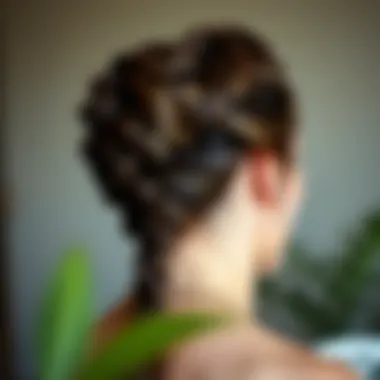
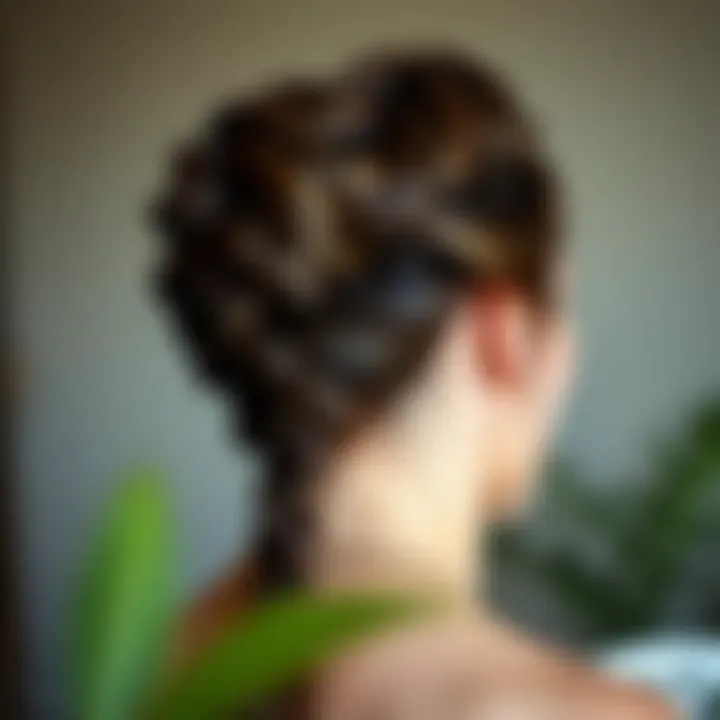
Cultural Significance of Braiding
Braiding hair transcends mere aesthetics; it embodies cultural heritage, personal expressions, and social identity across the globe. Each braid tells a story, connecting individuals to their roots and communities. For those with 24-inch hair, the significance intensifies, allowing broader opportunities for creative styles while evoking intricate cultural meanings. Understanding these cultural implications enriches the art of braiding, offering deeper insights into the practice beyond its surface value.
Braiding in Different Cultures
Throughout history, braiding has been embedded in multiple cultures, each with unique meanings and traditions attached to them. In many Indigenous communities, braids have been used as a symbol of strength and unity. For example, the simple act of braiding hair can signify the connection between family members, honoring past generations while fostering a sense of belonging in the present.
In Africa, different braiding styles can indicate marital status, age, or even tribal affiliation. Here, specific braids—like cornrows or goddess braids—serve as visual languages that communicate personal identity. The craft of weaving strands together can also reflect intricate societal roles and histories, showcasing the artistry passed down through generations.
In contrast, in Asian cultures, braiding is often associated with femininity and can reflect modesty or elegance. A classic example is the Japanese shimada, a complex updo for formal occasions. Such styles demonstrate not only skill but also a reverence for tradition and the art of hairstyling.
"Braids are timeless expressions of identity, weaving threads of culture and history into every strand."
The Evolution of Braiding Styles
As society progresses, so too does the art of braiding. The historical techniques have morphed, influenced by cultural exchanges, globalization, and modern fashion trends. The French braid, for instance, once a refined style, now finds itself adapted and repurposed in various iterations, appealing to casual and formal occasions alike.
Moreover, contemporary trends have embraced a fusion of styles, leading to innovative creations like box braids adorned with beads or colors, which reflect personal style and experimentation. This evolution highlights how traditional practices adapt, highlighting the fluidity of cultural expressions.
Today's diverse approaches to braiding invite everyone, regardless of background, to partake in this art, allowing for bridging connections across social divides. It encourages a collective appreciation for the skill involved while fostering creative self-expression among individuals.
In summary, the cultural significance of braiding extends far beyond aesthetic appeal. It encompasses a rich tapestry of identity, tradition, and personal expression, especially as it relates to 24-inch hair. The artistry involved is a reflection of history and creativity, showcasing both personal and communal narratives that continue to evolve.
Future Trends in Long-Hair Braiding
As fashion evolves, so too do hairstyling techniques, particularly in the realm of braiding. Long hair styles, especially those encompassing the popular 24-inch length, have become a canvas for artistic expression. The ongoing innovations within hair care and braiding methods not only enhance the aesthetic appeal but also prioritize the health and manageability of the hair. Focusing on future trends in long-hair braiding reveals enduring benefits and considerations that even the most discerning enthusiasts should take to heart.
Innovations in Hair Products
The market is seeing a surge in products tailored specifically for those seeking to master the art of braiding. Innovations include:
- Moisture-Rich Formulas: Products containing natural oils, such as argan or coconut oil, provide lightweight hydration. These not only help soften the hair but also prepare it for styling, preventing breakage while braiding.
- Heat Protectants: With some braiding techniques requiring the use of heat for styling, the development of advanced heat protectants is crucial. These sprays can ensure that hair retains moisture and shine, even after exposure to heat.
- Eco-Friendly Options: In an age where sustainability is key, many brands are developing biodegradable hair ties and non-toxic styling gels. This is not only responsible but also mirrors the values of modern consumers who are more environmentally conscious than ever.
The increasing variety and specialization of hair care products allows stylists and individuals alike to find options suited to their unique hair type and styling preferences. This personalization is what sets today's braiding apart from that of past decades.
Emerging Braiding Techniques
As creativity flows, new braiding techniques are emerging, expanding the boundaries of traditional styles. Some noteworthy trends include:
- Butterfly Braids: This whimsical style incorporates multiple braids positioned across a base braid, giving a three-dimensional appearance that stands out without being overbearing.
- Ladder Braids: An intricate technique that creates the illusion of a ladder by interlacing hair in a crisscross fashion. This style not only showcases length but also offers a unique visual impact.
- Colored Braids: With the advent of temporary hair dyes and colorful extensions, incorporating shades into braids allows for a customizable look. This trend embraces personal expression, with the array of color options reflecting individuality.
"The future of braiding is not just about length; it's about creativity, individuality, and maintaining the integrity of the hair."
Closure: The Art of Braiding as an Expression
As we wrap up our exploration of braiding hair, particularly focusing on 24-inch styles, it's crucial to recognize how braiding transcends mere hairstyling. It's a form of expression, capturing individuality and cultural significance in every twist and turn of the strands.
Braiding hair isn't just about looking good; it's about embodying personal narrative. Each style tells a story. Whether it’s the historical context of the braid reflecting social status or an informal box braid you simply fancy for a day out, these choices can signify much more than aesthetic appeal. Like an artist picking paint colors, each braid communicates something deeply personal, influenced by culture, occasion, and personal preference.
Moreover, the versatility of braiding techniques allows individuals to put their spin on traditional methods. Going beyond just functionality, a carefully crafted braid can elevate an outfit, shift the tone of a setting, or represent freedom and creativity. Remember, every completed braid is a labor of love, often requiring practice and dedication. Every mishap along the way is a step toward mastery.
Indeed, the act of braiding can serve as a meditative exercise itself, offering a moment of calm amid the fast-paced world around us. With hands busy, the mind can wander or focus, and the act of creation becomes its own form of art.
In essence, incorporating braiding into one's hairstyling repertoire isn't just a skill—it’s an exploration of identity and an outward expression of who we are.
Reflections on Hairstyling as an Art Form
When discussing hairstyling as an art form, it’s important to consider its roots in creativity and individual expression. Braiding, in particular, stands out as a simple yet profound way to explore one's artistic boundaries.
Many artists seek inspiration outside their mediums. Similarly, hairstylists draw upon elements of design, culture, and even architecture to create hairstyles that resonate with their clients. 24-inch styles offer a unique canvas, inviting intricate designs and personal touches that can transform the ordinary into the extraordinary. For instance, a long fishtail braid might reflect a subtle nod to nautical themes and flows, while a chunky box braid can signify urban chic. Each braid, thus, encapsulates a specific essence, turning hair into visual art.
The understanding of balance, symmetry, and technique in braiding can parallel lessons learned in painting or sculpting. Learning to manipulate strands is akin to balancing colors or shaping forms. The use of tools, like combs or styling creams, becomes an extension of the artist's toolbox, ensuring that the vision behind the braid remains intact.
Embracing hairstyling as an art encourages a deeper connection to the craft and reminds us that every detail—down to how tight or loose a braid is—can affect the overall feel of a style. People not only wear their hair; they make a statement.
Encouragement for Continued Learning
Mastering the art of braiding isn't a one-and-done feat; it’s a journey of continual growth and discovery. For those seeking to expand their hairstyling capabilities, there are countless resources—from online tutorials to local workshops—that can provide fresh perspectives and techniques. In the rapidly evolving world of hairstyles, keeping abreast of trends is vital.
Consider starting with a solid foundation, revisiting the techniques covered in this article before stepping into more advanced styles. As you become comfortable with traditional braids, let them serve as a stepping stone to explore more innovative and complex patterns, such as Dutch braids or cascading styles.
Engaging with communities on platforms like Reddit or Facebook can give you access to tutorials, advice, and inspiration from fellow enthusiasts. Social media can also be a great place to share your work and gain constructive feedback. Remember that every braid you create adds to your experience. With each attempt, your skills sharpen, allowing you to explore your individual flair.
Ultimately, the pursuit of hairstyling is not just about perfecting a technique; it's a lifelong journey that invites you to express yourself and connect with the world around you. You never know what a braid could mean to someone else or how it could inspire them in their own styling endeavors.







